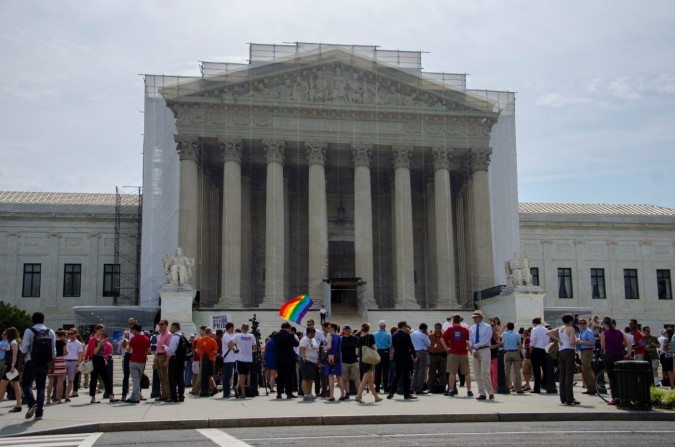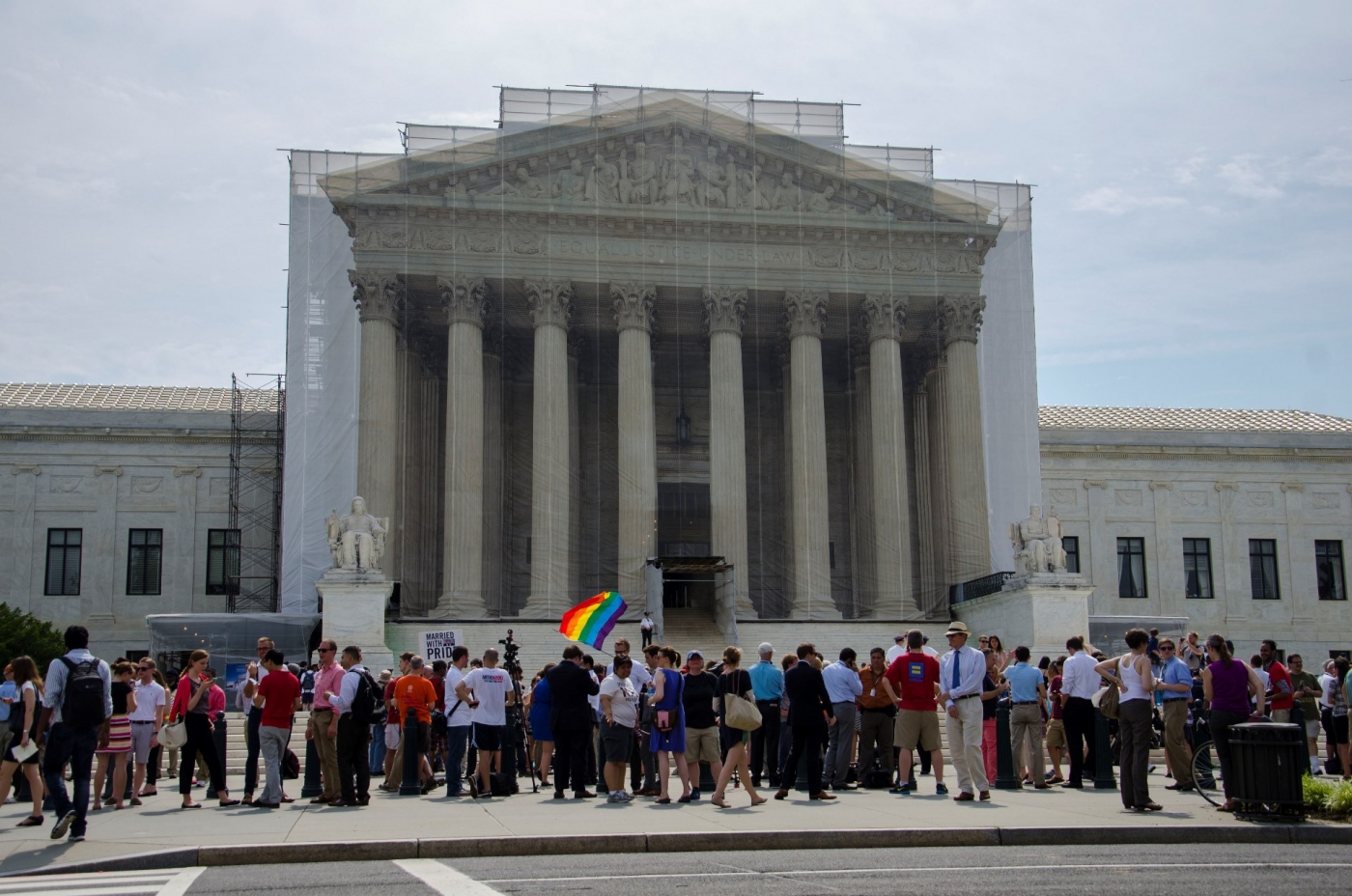
Dozens of people gather Monday outside the Supreme Court in anticipation of decisions about gay marriage, voting rights and affirmative action. The court sent the affirmative action in higher education case back to the lower courts. Decisions on DOMA and Prop 8 are expected this week. (Deanna Del Ciello/SHFWire)
WASHINGTON – In a day full of discrimination decisions, the Supreme Court sent an affirmative action case back to a lower court and ruled on a critical aspect of the Civil Rights Act of 1964.
The court did not decide whether the University of Texas at Austin acted unconstitutionally in using race as a factor for admissions, leaving the debate over affirmative action unresolved.
Justices said that the university must prove to an appeals court that using affirmative action in its admissions process achieves educational benefits from diversity. Essentially, the school must define its criteria for using affirmative action before a decision can be reached.
“The particular admissions process used for this objective is subject to judicial review. Race may not be considered unless the admissions process can withstand strict scrutiny,” Justice Anthony Kennedy said, reading the court’s opinion.
Abigail Fisher sued the university after being rejected for admission on the basis that her spot was taken by a less-qualified minority candidate.
Fisher, who is white, said the university violated the Equal Protection Clause of the 14th Amendment, which prohibits discrimination under law.
The university, which considers increasing racial minority enrollment a priority, uses race as one factor in admissions.
“The University must prove that the means chosen by the University to attain diversity are narrowly tailored to that goal. On this point, the University receives no deference,” Kennedy said.
In a rare move, Justice Ruth Ginsburg spoke about why she disagreed with the Supreme Court’s decision after it was read. She said the university did nothing wrong, and has already proved that its admissions criteria were within the law.
“I have several times explained why government actors, including state universities, need not be blind to the lingering effects of ‘an overtly discriminatory past,’” Ginsburg said in her dissent.
The vote was 7-1 with Justice Elena Kagan not taking part, presumably because she was involved in the case when she was solicitor general.
Justice Clarence Thomas wrote a concurring opinion that read more like a dissent. He said he agreed with the court’s opinion that the lower court had not applied “strict scrutiny” in examining the issues.
But he said the university was making arguments that sounded like those made by segregationists in the 1950s.
In a separate decision dealing with discrimination, the court ruled that employees being retaliated against for complaining of discrimination must face different criteria than employees suing for discrimination alone. These rules come from Title VII of the Civil Rights Act. It says employees discriminated against based on their complaints of workplace discrimination must prove but-for causation. This means they must prove that they were treated differently only because the employer disagreed with their reactions to discrimination.
The case began when a physician of Middle Eastern descent at the University of Texas Southwestern Medical Center and Parkland Memorial hospital claimed that one of his university supervisors was discriminating against him based on his race. He arranged to quit working at the university, but continue at the hospital (they are affiliated), and sent a letter to his supervisor’s boss, saying he was leaving because of his supervisor’s harassment.
The supervisor’s boss, saying that the doctor’s supervisor had been publicly humiliated by the claims, objected to the hospital’s job offer for the physician, which did not hire him.
The physician sued, claiming that the job offer was rescinded only because of his complaint about his treatment
Based on the court’s decision, anyone suing for maltreatment based on his or her reaction to discrimination, must prove it was the only reason for maltreatment.
Again, Ginsburg read her strong dissenting opinion aloud and asked Congress to make changes to Title VII. She said making “retaliation” against discrimination more difficult to punish will increase cases of workplace discrimination. Quoting a previous Supreme Court decision, Crawford V. Metropolitan Government of Nashville, Ginsburg said, “‘Fear of retaliation is the leading reason why people stay silent’ about discrimination they have encountered or observed.”
The court still has a half-dozen opinions to issue, including two about gay marriage and one about Section 5 of the Voting Rights Act. The court will issue rulings Tuesday and may add one more day this week before starting its summer recess.
____________
Editor’s note: this article was previously published by Scripps Howard Foundation Wire.


